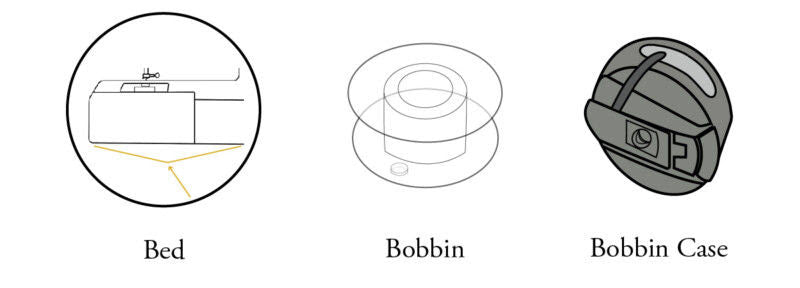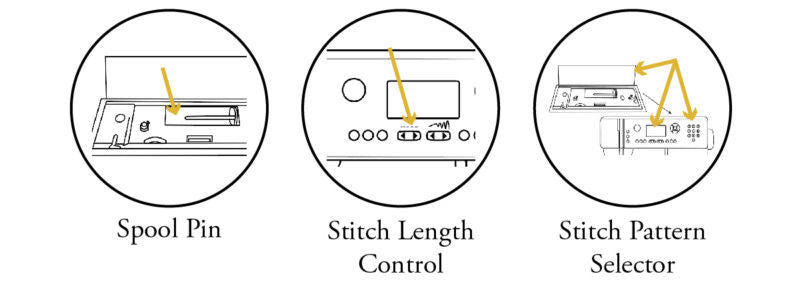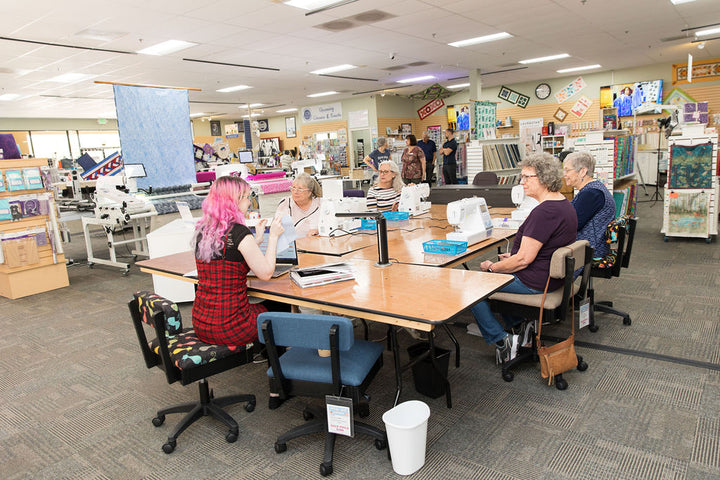
-
WINDING A BOBBIN, THREADING YOUR MACHINE & CHANGING A NEEDLE
New to sewing? Welcome!
We are happy to help you as you get started on your creative journey. The resources on this page are designed to help you get familiar with the different parts of your sewing machine and troubleshoot common problems when first starting out.
Please take a moment to look over the resources on this page. If you still have questions you are not able to answer with the information found on this page feel free to send us an email with your questions and a number where we can reach you to marketing@qualitysewing.com. This will allow us to help answer your question as well as add to this page for others that might have the same question.
Parts of a Sewing Machine
- Bed – the flat part of the sewing machine where the fabric rests when it’s being sewn
- Bobbin – a bottom thread fed through the machine to meet the spool to make the stitch
- Bobbin Case – holds the bobbin in place, allowing the machine to unravel it neatly

- Bobbin Cover/Slide Plate – covers the bobbin case and keeps it in place
- Bobbin Winder Spindle – a mechanism that is typically moved to the right to wind thread from the spool to the bobbin
- Bobbin Winder Thread Guide – used to wind the bobbin evenly

- Feed Dogs – 2-3 metal bars on a sewing machine bed that feed fabric through the machine
- Foot Pedal – regulates the start/stop of the machine through the use of the foot
- Free Arm – a detachable piece that’s a part of the machine bed; it’s used to sew small or circular areas

- Guidelines – measurements located on the throat plate used to guide the edge of fabric to keep seam widths even
- Hand Wheel – large wheel found on the right side of the machine that raises and lowers the needle
- Needle Clamp – small, flat screw that keeps the needle in place

- Power & Light Switch – turns the sewing machine and its light on/off
- Power Socket – where the power cord is placed into the machine
- Presser Foot – uses pressure to hold fabric in place as it meets the feed dogs

- Presser Foot Lever – used to raise and lower the presser foot
- Reverse Stitch Button or Lever – a button/lever that creates backstitches to lock the seam in place
- Sewing Needle – special needle designed for use in a sewing machine rather than for hand sewing

- Spool Pin – small extendable rod on the top of a machine that holds thread and keeps it in place
- Stitch-Length Control – a dial or button that controls the distance between stitches
- Stitch Pattern Selector – a dial or screen that allows the user to choose a stitch type

- Stitch-Width Control – dial that controls the width between stitches or the position of the needle
- Tension Control – a dial that controls the amount of pressure that’s applied to the thread
- Thread Cutter – a knife found to the left and behind the needle that is used to cut threads after a seam is sewn

- Thread Guides – guides the thread from the spool to the needle
- Thread Take-Up Lever – a metal hook that pulls back thread after each stitch to prevent tangles and feeds thread from the spool to the needle
- Throat Plate – metal part of the machine located under the presser foot that protects the bobbin/bobbin case




